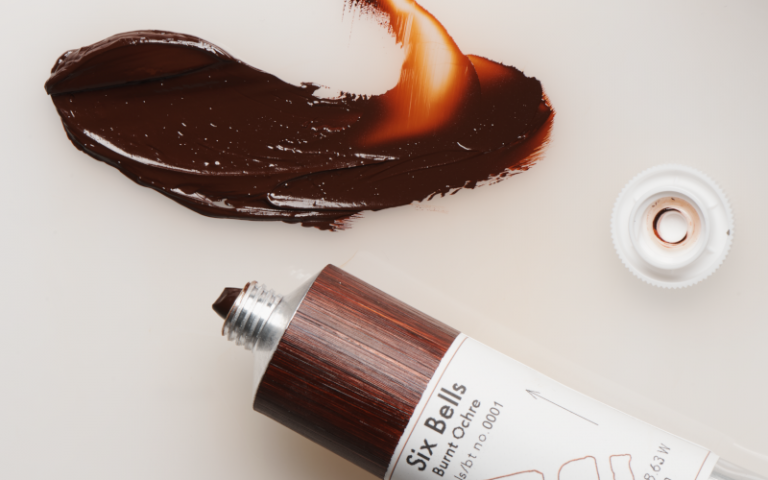Transforming coal waste into vibrant paints through UCL collaboration
UCL artist Onya McCausland developed a range of paints from waste generated by de-commissioned coal mines, working with UCL Innovation & Enterprise and the Coal Authority.

16 December 2020
The artistic potential in waste
The UK Government’s Coal Authority oversees water treatment at former coal mines across the country. This prevents iron solids from entering and polluting local water courses and drinking water aquifers. But the process also leaves behind 4,000 tonnes of ochre waste a year.
While studying for a PhD at the UCL Slade School of Fine Art, Onya saw the possibility of transforming this waste into ochre pigments for use in paint.
“These pigments and artworks have come into existence thanks to human activity,” said Onya, who is now a postdoctoral researcher at the Slade. “They're not only beautiful but also highlight the intricate relationship between humans and the way they exploit the local landscape. The mine water treatment schemes are the really important link between the colour, the material, and the place.”
With knowledge exchange funding from UCL Innovation & Enterprise, Onya was able to develop a feasibility study and a business case for developing the paints.
A commercial proposition
The resultant partnership between UCL, the Coal Authority and artist materials supplier Michael Harding resulted in a unique line of wall paint and artists’ oil paints being brought to market.
The first paint colour in the range is called ‘Six Bells Red’, after the Six Bells Mine Water Treatment Scheme in Wales. A hundred one-litre tins of wall paint and 1,000 tubes of artists’ oil paint were made available to buy via Turning Landscape CIC. Turning Landscape is a community interest company created to ensure that profit from paint sales is reinvested back into the local Welsh community.
Onya has been supported on her journey by Dr Steven Schooling, Director of Physical Sciences, Engineering, Built Environment & Social Sciences at UCLB. UCLB is the commercialisation arm of UCL Innovation & Enterprise.
Steven said: “This has been an inspiring initiative which has seen the collaboration of a diverse group of experts in their various multi-disciplinary fields. Seeing the Six Bells community painting their environment with this unique paint is a culturally significant moment and a great tribute to UK mining history.
“Onya’s commitment to her vision and the support of colleagues across UCL Innovation & Enterprise, together with funding from UCL’s HEIF Knowledge Exchange Fund and the Leverhulme Trust, has resulted in a unique set of impacts being realised in the arts and humanities area.
Engaging local communities through art
The partnership has also engaged with local communities from the start. For example, UCL and the Coal Authority have developed a public engagement project at the National Coal Mining Museum for England in Wakefield and the nearby Yorkshire Sculpture Park. The intention is to positively alter public perceptions of coal mining waste, so it's seen as something with artistic and historic value.
More recently the project has engaged with Six Bells in South Wales. Fifty tins of Six Bells Red paint were given to local people and Gwent organisations to paint buildings, houses, doors, gates and walls. An iron plaque with a sitemap will be installed at the Six Bells site, marking it as the source of the paint. The plaque will be visible from the footpath at the far north end of the perimeter fence.
Onya has also frequently used ochre pigment from former coal mines in her own work, which has been displayed around the UK at exhibitions.
Links
Find out more about:
 Close
Close

